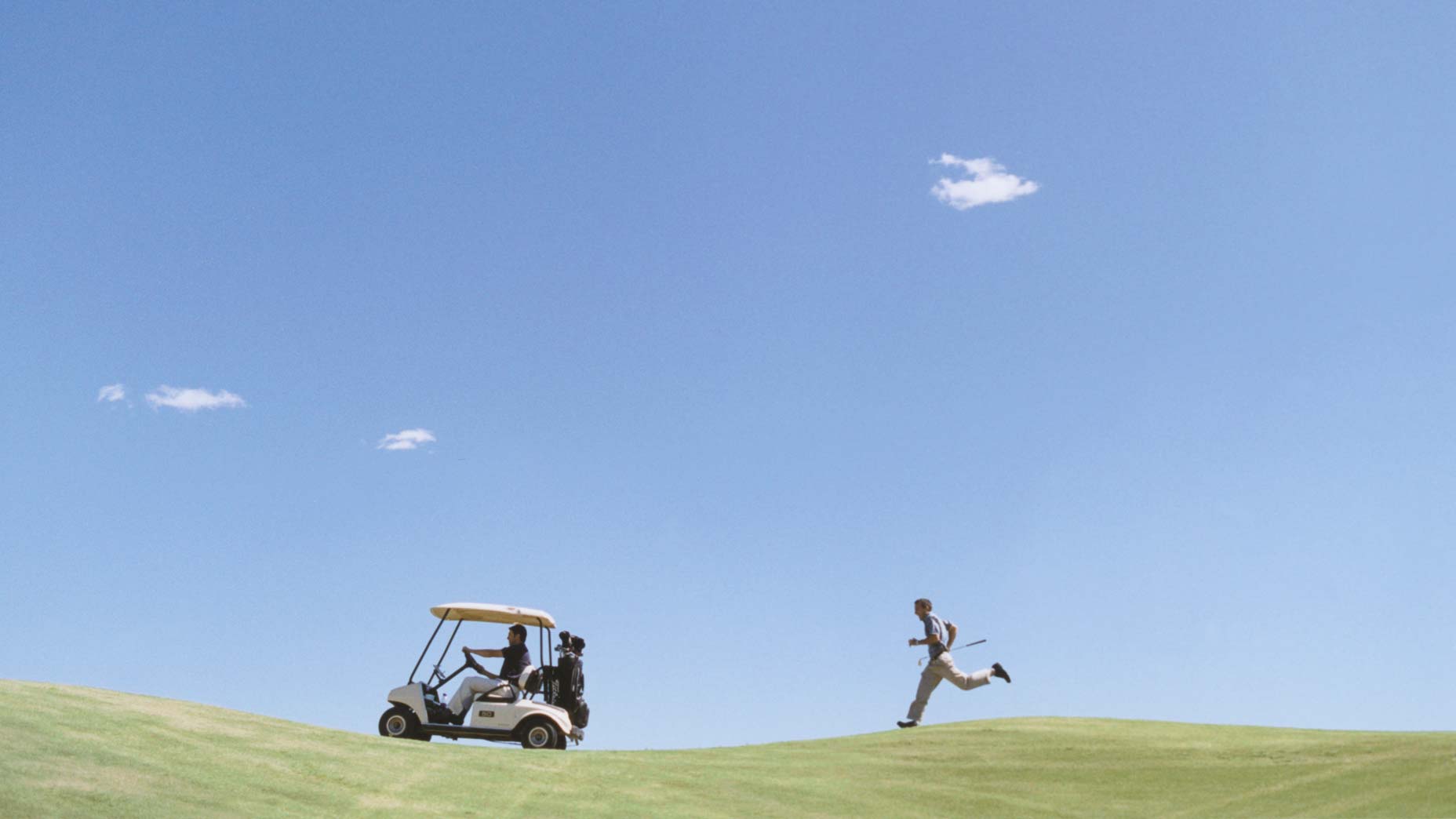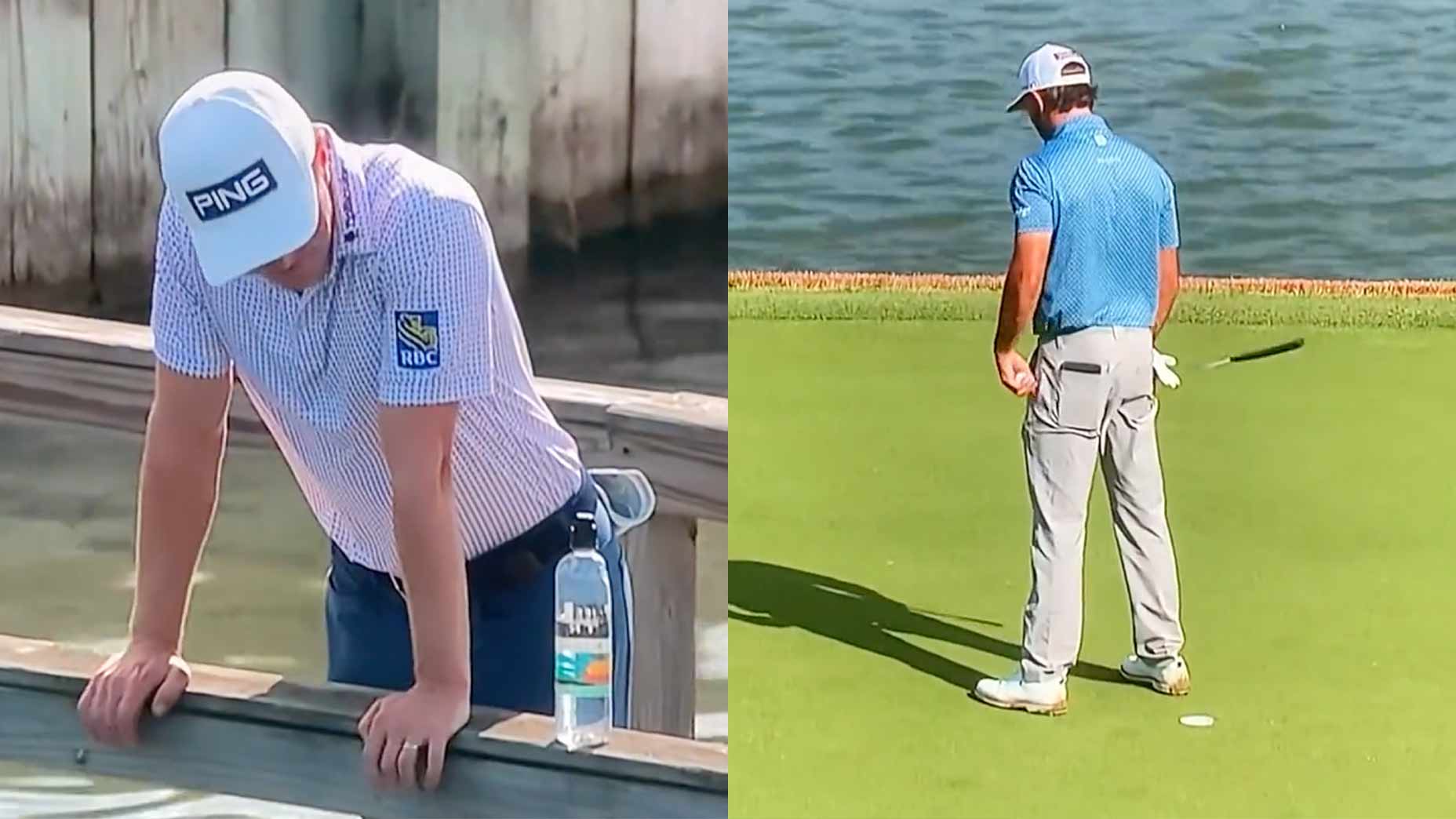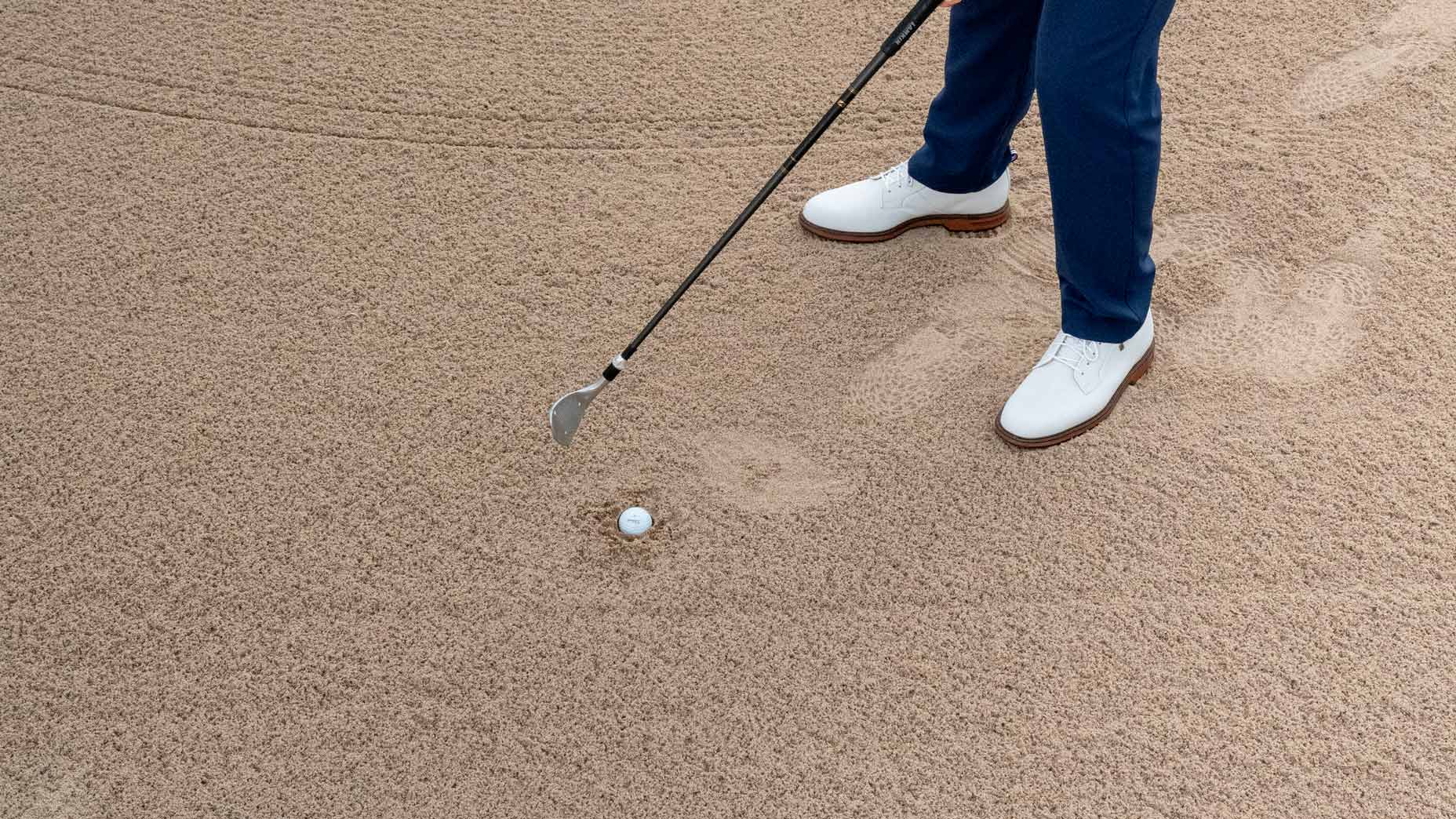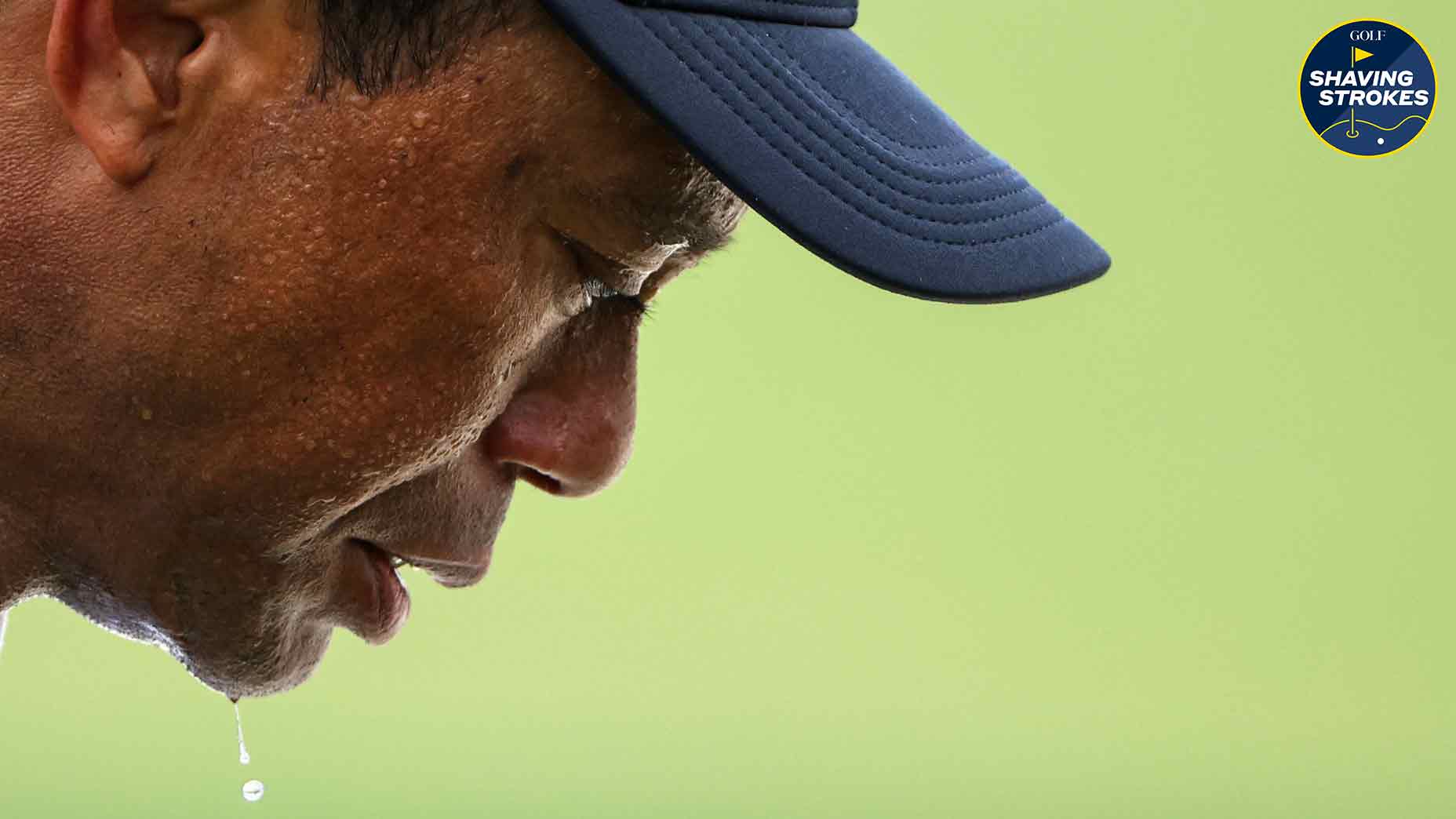8 pace-of-play rules that every golfer should follow, according to our Top 100 Teachers

We asked GOLF Top 100 Teachers for their best guidelines when it comes to pace of play during a round of golf.
Getty Images
One of the many storylines from Masters Sunday was the pace of play.
For those unfamiliar with the kerfuffle, Brooks Koepka — who surrendered a two-shot lead in the final round to eventual champion Jon Rahm — was less-than-thrilled with some groups ahead of the final pairing; and that’s putting it lightly.
During his post-round press conference at Augusta National, Koepka called out the pairing in front of his: Patrick Cantlay and Viktor Hovland.
“Brutally slow,” Koepka said. “Jon went to the bathroom like seven times during the round, and we were still waiting.”
Despite the criticism from Koepka, Cantlay defended his pace at Augusta, telling reporters that every group was dealing with slow play.
“We finished the first hole, and the group in front of us was on the 2nd tee when we walked up to the 2nd tee, and we waited all day on pretty much every shot,” Cantlay said. “We waited in 15 fairway, we waited in 18 fairway. I imagine it was slow for everyone.”
Regardless of whose side you’re taking, slow play remains a pain point across all levels of the game and something that all golfers should strive to avoid. Here, according to our Top Teachers, is how to make sure you’re keeping up.
8 pace-of-play guidelines for golfers
For guidance for amateurs, I convened a panel of GOLF Top 100 Teachers. While these aren’t the bible of pace-of-play rules, they’re a helpful resource for when your group (or the group in front of you) is moving a bit slower than expected.
So take a look and make some notes for yourself!
1. Is there a general rule for amateurs to follow when it comes to pace of play?
Kevin Weeks, 2023 National PGA Teacher & Coach of the Year: “Provided you can do it safely start getting your yardage, checking the wind, your lie and picking your club before your playing partner hits so when it is your turn you are ready to hit!”
Joe Hallett, Director of Instruction, Vanderbilt Legends Club: “Golf overrules proper etiquette every time; unless it is sanctioned play. The first one to their ball should be the first one to play.”
Mike Bender, Master Instructor, Mike Bender Golf Academy: “All players need to be ready when it’s their turn to play. If you’re playing in a cart with another player, when you reach the first ball, either the driver or passenger should wait until a club is pulled before driving away to their ball. Players who wait until the first person hits the ball before driving over to their ball significantly slow down play. Same thing on the greens. Read your putt while others are getting ready. This way, when it is your turn, you’re set to go.”
2. What’s an effective tip that players can use to play “ready golf”?
Hallett: “Never walk back to get a yardage for your shot. If you use the markers on the ground, get that while driving or walking to your ball. If you use a range finder, start to use it once you’re two steps behind your ball. Here’s a pro tip: 90 percent of amateur golfers come up short… so get your yardage from two steps behind your ball.”
Martin Chuck, Founder, Tour Striker Golf Academy: “Start preparing your thoughts before you get to your golf ball. You can generally know what club you will need and the strategy before you get to your ball. This will help you prepare with a practice swing and walk-in routine.”
Kellie Stenzel, Founder, Kellie Stenzel Golf Lessons: “I tell my students all of the time that they should never ask if they should tee off… just go! At almost every moment in a round of golf with a group, someone should be preparing and swinging, and the group should be facilitating getting the person who is hitting next to their ball as quickly as possible.”
Brian Manzella, Founder, Brian Manzella Golf Academy: “Be as close to over your ball as you can when another player’s shot is in the air. If given the option, try to hit your next.”
3. Ideally, how much time should a player take between shots (not counting walking/driving to their balls)?
Trillium Rose, Director of Instruction, Woodmont Country Club: “Well, let’s do the math on this. A 4.5 hour round is 270 minutes. If you shoot 90, that’s three minutes per shot. That’s even less time if you shoot a higher score. So the higher your score, the faster you need to play. I know it may not seem fair because, when you’re learning, you have about a dozen swing thoughts, and like to take practice swings. So the way to reconcile this is to pick your ball up and just skip some shots.”
Chuck: “Tiger Woods won the U.S. Open in 2000 by 15 shots. When he committed to walking into the golf ball after a practice swing, it took him an average of 13.2 seconds from first step to striking the ball.”
Stenzel: “10 seconds, which includes a practice swing and taking the time to aim and align themselves.”
Joe Plecker, Director of Golf Instruction, The Landings Club: “The USGA allows 40 seconds to players when they reach their golf ball to begin their shot. That is so much time — even longer than a shot clock in basketball. You should be thinking of the shot you are taking as you are approaching the ball. Once you get to the ball, take a look at the yardage, make a strategy, and take a few practice swings. You would have plenty of time to make a swing.”
4. What’s the best way to address a group in front of you that’s playing too slowly?
Manzella: “Hands on your hips, shaking your head, with your palms out and up works wonders.”
Bender: “Call the pro shop and ask if they can send out a ranger. Not sure there is a proper way to tell a group in front of you that they are not very good and are holding everyone up. Golf courses need to have on-course rangers that do the warnings. Many courses tell the group that they have to skip a hole if they get too far behind. That is a good idea because no one wants to skip holes.”
5. At what point do you think a player should “pick up” and forfeit a hole?
Weeks: “When it is obvious they can’t tie the hole.”
Chuck: “When the player reaches their equitable-stroke-control score. For most players, that’s a double bogey.”
Manzella: “If you are not playing stroke play against a player, the group, or the field and you are having a tough go of it… pick up.”
Bender: “It would be good to have a max count per hole so that players can pick up once they reach that number. Since it’s not a rule, it would be hard to enforce. But my recommendation is triple bogey.”
6. When a player looks for their ball, what’s an appropriate time to spend searching for it before just dropping?
Plecker: “If the ball is lost in an area that looks like it can be easily played from, spend a few minutes circling around to find it. If it is down a gorge under tree trunks, pass. Just drop immediately and move on.”
Stenzel: “It depends on the format. In a more relaxed club or friendly event, take about 10 seconds. In a more formal tournament, the player should take their due time.”
7. If feeling rushed, how can players maintain their composure?
Plecker: “It’s difficult. I’ve played in golf tournaments where our group was on the clock, being watched by an official and time was being kept. It was really challenging to not think about that while trying to compete. The only thing I think that helps is to breathe and focus on the present moment and the shot you are trying to hit.”
Rose: “If you’re feeling rushed, shut down the conversations with your partners and spend time getting to your ball. Create your own time by focusing on what club you might need well before you get to your ball so you can get them out of your bag. Along those lines, when you’re finished with a shot, keep it in your hand while you get into the cart. Then put it back in the bag once you’re done choosing the following club.”
Bender: “If you are feeling rushed, the main thing to hang your hat on is your pre-shot routine mechanics. If you have to rush, make sure that you keep your pre-shot routine the same no matter what. You can run between shots, but when it comes to your turn to hit, you must do what you always do in the routine to give yourself the best chance at hitting a good shot.”
8. Is there a target time amateurs should keep in mind to complete 18 holes?
Plecker: “My advice is to know where you are and to adhere to the guidelines of pace of play. If it is a weekend morning round, play ready golf and be quick. If it’s the late afternoon and you can stroll around, take your time.”
Stenzel: “For four players, target four hours. For three players, target 3.5 hours. And for two players, it should be about three hours.”












